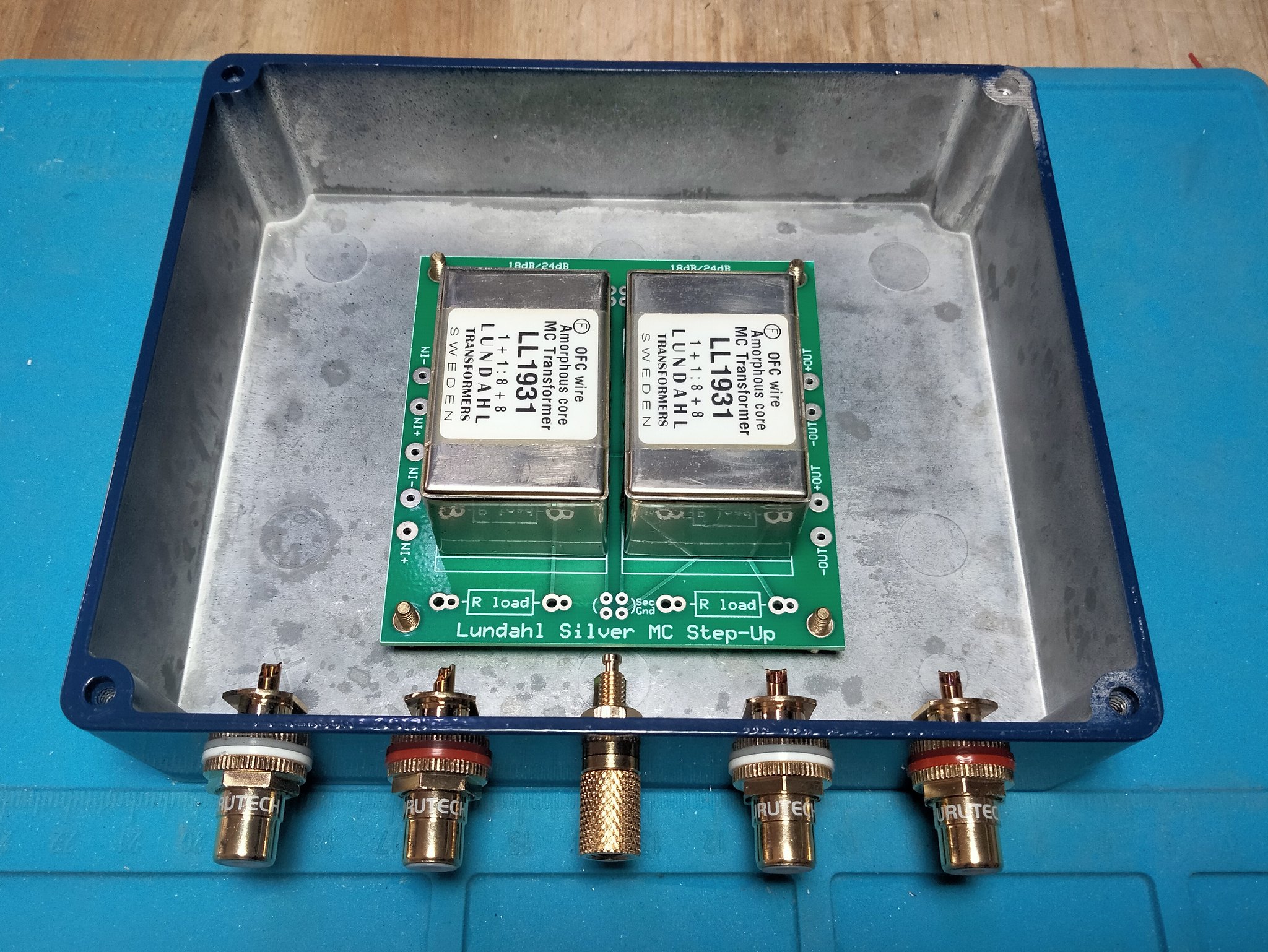Stereophile
Gramophone Dreams #54: DS Audio DS003 optical cartridge & EMIA, Lundahl, Koetsu, Sculpture A step-up transformers Page 2 | Stereophile.com
Amorphous Core (Lundahl)
K&K Audio's $1500 Premium Silver MC Step-Up (footnote 3) uses Lundahl's LL1931 Ag transformers, which are made with Lundahl's "finest amorphous cobalt uncut strip core" and wound with pure silver wire. According to K&K Audio's Kevin Carter, "The LL1931 provides a very open and detailed picture of the 'space' that was recorded, providing a level of detail recovery that I had never previously experienced with LPs."
My auditions confirmed Kevin's observation, but my experience with this transformer is limited, because I auditioned it with only one cartridge: the high-impedance (40 ohm) Zu Audio Zu/DL-103 Mk.II moving coil. (Lundahl's website specifically recommends the LL1931 Ag's step-up ratio for use with 40 ohm cartridges. )
I listened to the K&K + Zu-Denon (with a variety of RIAA stages) over many months. Every record testified to the mesmerizing effects of the LL1931's clarity and the goose-bumpiness of its transient bite. Bass reproduction could be thrilling, just-right tight with genuine power. The LL1931's best, most obvious trait was how specifically it rendered recorded information. Its worst trait was that, compared to Auditorium 23's mu-metal SUT (which was designed by Keith Aschenbrenner for use with the DL-103), it made the spaces between details feel empty, causing reverb tails and vibrating cathedral air to go missing or attenuated. The Lundahl transformers (footnote 4) showcased tight bass, intense detail, and a somewhat blunt clarity. The A23 showcased tone-truthfulness, rhythmic bounce, and a more refined presentation of ambience.
According to Per Lundahl, writing by email, "Choice of core material is a question of taste. Our top-of-the-line MC transformers are available with either our uncut amorphous strip core (like the LL1931) or with a conventional mu-metal lamination core (like the LL1933). As it has turned out, the amorphous-core transformer is most popular, but the mu-metal lamination transformer is still preferred by some audiophiles. In THD ... and linearity measurements, the mu-metal lamination version outperforms the amorphous core version, but in listening tests, the amorphous core usually wins."
I asked Per to explain the metallurgical differences between mu-metal, amorphous cobalt, and nanocrystalline transformer cores.
"In true amorphous material, there should not be any crystal structure. Atoms are randomly oriented, and there is no repeated structure such as you find in most solid metals. To achieve this, the melted metal is cooled so rapidly that atoms get stuck in their random positions. ... This very rapid cooling requirement is the reason why amorphous metal is only available as thin film, about 1 mil (0.025 mm) thick.
"To achieve nanocrystalline material, special amorphous iron is carefully heat treated at very controlled temperatures. In this process, very small [nano]crystals are formed."
I have 4 vesions
LL1931Ag Assembled version from Lundahl or Kit format
LL1931Cu Assembled Version from Lundahl or Kit format



Gramophone Dreams #54: DS Audio DS003 optical cartridge & EMIA, Lundahl, Koetsu, Sculpture A step-up transformers Page 2 | Stereophile.com
Amorphous Core (Lundahl)
K&K Audio's $1500 Premium Silver MC Step-Up (footnote 3) uses Lundahl's LL1931 Ag transformers, which are made with Lundahl's "finest amorphous cobalt uncut strip core" and wound with pure silver wire. According to K&K Audio's Kevin Carter, "The LL1931 provides a very open and detailed picture of the 'space' that was recorded, providing a level of detail recovery that I had never previously experienced with LPs."
My auditions confirmed Kevin's observation, but my experience with this transformer is limited, because I auditioned it with only one cartridge: the high-impedance (40 ohm) Zu Audio Zu/DL-103 Mk.II moving coil. (Lundahl's website specifically recommends the LL1931 Ag's step-up ratio for use with 40 ohm cartridges. )
I listened to the K&K + Zu-Denon (with a variety of RIAA stages) over many months. Every record testified to the mesmerizing effects of the LL1931's clarity and the goose-bumpiness of its transient bite. Bass reproduction could be thrilling, just-right tight with genuine power. The LL1931's best, most obvious trait was how specifically it rendered recorded information. Its worst trait was that, compared to Auditorium 23's mu-metal SUT (which was designed by Keith Aschenbrenner for use with the DL-103), it made the spaces between details feel empty, causing reverb tails and vibrating cathedral air to go missing or attenuated. The Lundahl transformers (footnote 4) showcased tight bass, intense detail, and a somewhat blunt clarity. The A23 showcased tone-truthfulness, rhythmic bounce, and a more refined presentation of ambience.
According to Per Lundahl, writing by email, "Choice of core material is a question of taste. Our top-of-the-line MC transformers are available with either our uncut amorphous strip core (like the LL1931) or with a conventional mu-metal lamination core (like the LL1933). As it has turned out, the amorphous-core transformer is most popular, but the mu-metal lamination transformer is still preferred by some audiophiles. In THD ... and linearity measurements, the mu-metal lamination version outperforms the amorphous core version, but in listening tests, the amorphous core usually wins."
I asked Per to explain the metallurgical differences between mu-metal, amorphous cobalt, and nanocrystalline transformer cores.
"In true amorphous material, there should not be any crystal structure. Atoms are randomly oriented, and there is no repeated structure such as you find in most solid metals. To achieve this, the melted metal is cooled so rapidly that atoms get stuck in their random positions. ... This very rapid cooling requirement is the reason why amorphous metal is only available as thin film, about 1 mil (0.025 mm) thick.
"To achieve nanocrystalline material, special amorphous iron is carefully heat treated at very controlled temperatures. In this process, very small [nano]crystals are formed."
I have 4 vesions
LL1931Ag Assembled version from Lundahl or Kit format
LL1931Cu Assembled Version from Lundahl or Kit format



Last edited:
you need to use shielded cable from SUT to phono
https://www.amazon.com/gp/product/B01ALHY04I/ref=ppx_yo_dt_b_asin_title_o01_s00?ie=UTF8&psc=1
https://www.amazon.com/gp/product/B01ALHY04I/ref=ppx_yo_dt_b_asin_title_o01_s00?ie=UTF8&psc=1
















